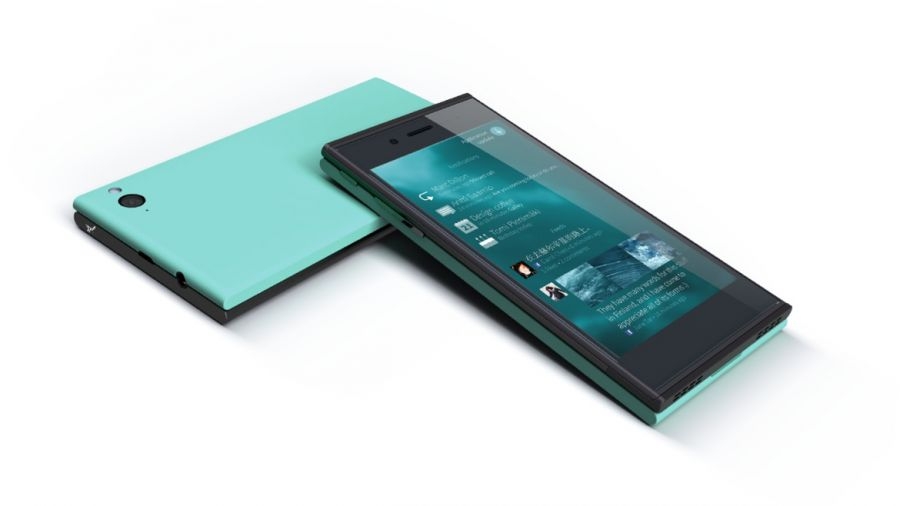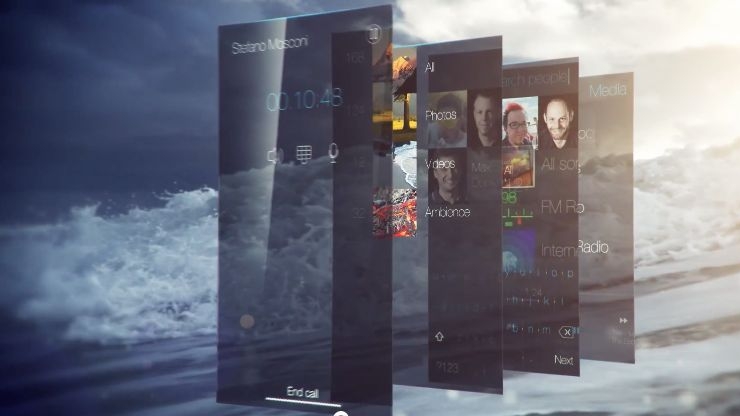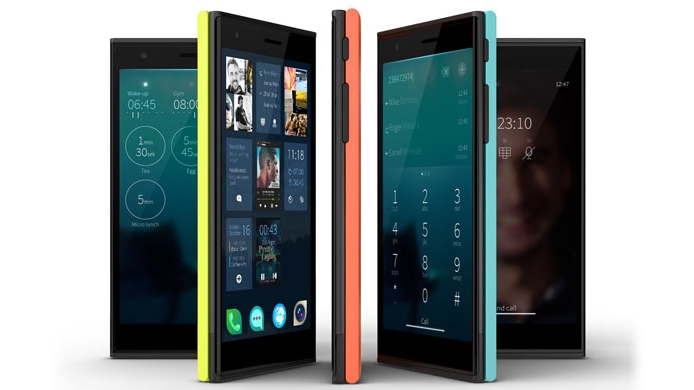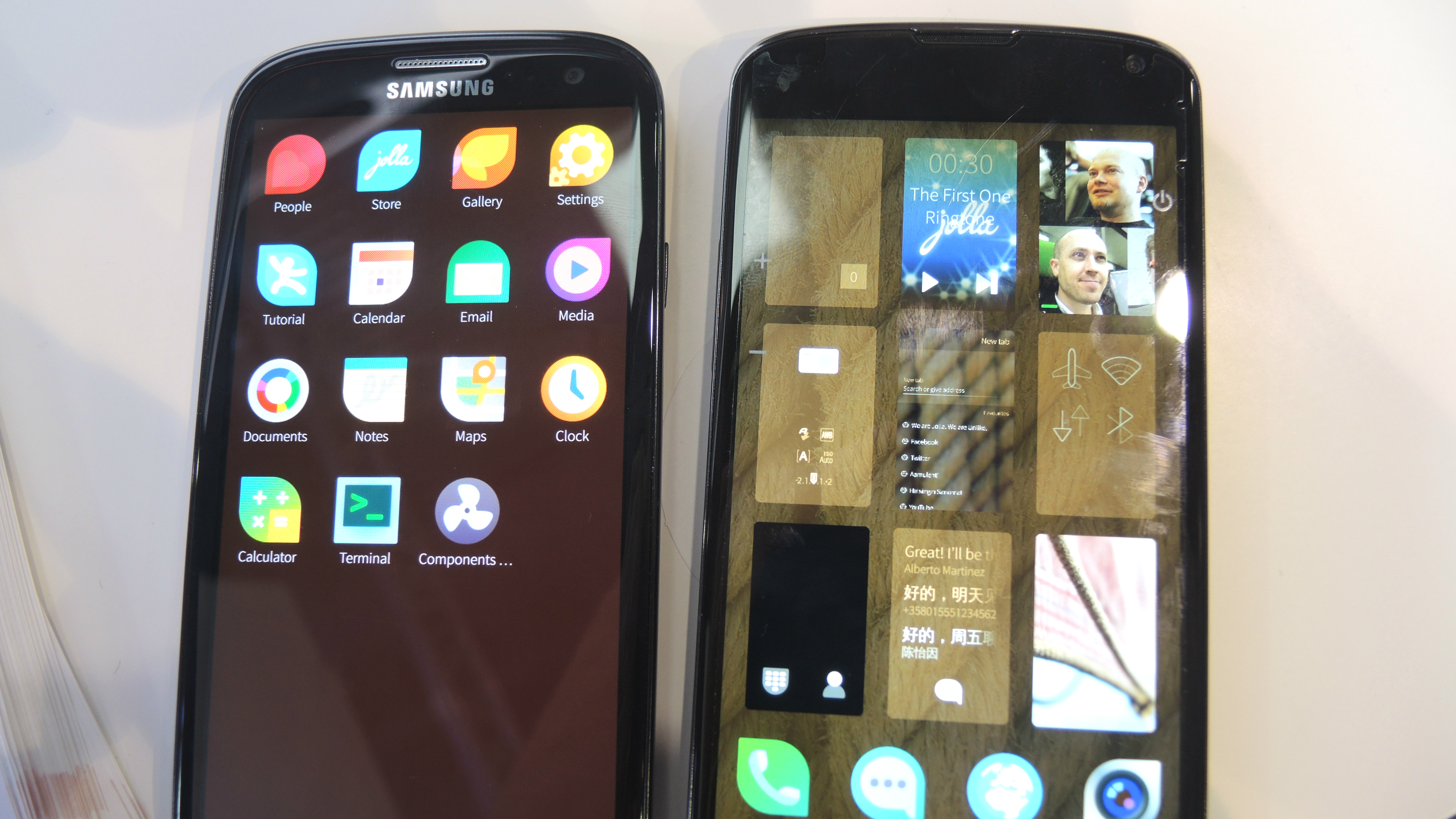Sailfish: the OS that wants to dethrone Android
MeeGo's dead, long live Sailfish.
Custom colours
Sailfish OS also puts a lot of focus on visual customisation, allowing you to change the colour of the interface to match the colours of whatever background image you're using and the colour change is applied not just to the home screen but also to the apps themselves.

It's an idea which Jolla has taken even further by releasing smart covers for its first Sailfish OS phone (also called Jolla). By putting a different coloured cover on the phone you'll get access to a matching wallpaper, theme and even sound effects.
Each backplate is equipped with NFC, so the handset will be able to automatically communicate with it and detect which colour shell your phone has, changing the theme accordingly.
There's a lot of marketing potential here for companies, as there's already an Angry Birds backplate for example, which not only shows off the brand to anyone looking at your phone but even alters the phones UI to act as a constant reminder that you haven't launched any birds off catapults in the last half hour.
The cases can even add new functionality to the phone, for example there's one made by iProtoxi which has a light up Jolla logo, which can change colour to alert you to calls and texts, then let you answer by swiping across it or mute the call by holding your hand over it.
Android compatible
All of which is great, but a smartphone OS lives and dies by its app selection. This is an area where an upstart couldn't hope to compete right?
Maybe not. Because Sailfish OS doesn't just have access to its own apps, it can also run Android apps from various app stores (though not Google Play unsurprisingly). So it instantly has access to a huge library of applications, in the same way Nokia is doing with the Nokia X family.
Sign up for breaking news, reviews, opinion, top tech deals, and more.
Even so, it's still likely to be a tough sell to get manufacturers to actually release phones with Sailfish OS on when most people are buying iOS and Android, and as good as being compatible with Android apps is, especially in the developing markets where Sailfish is initially being targeted, it's not a patch on the proper Google Play store in users' minds.
But not as tough a sell as you might think, because as well as being able to run Android apps it's also compatible with Android hardware, meaning that manufacturers can just load the OS onto hardware that they'd otherwise be shipping with Android.

That makes things a lot quicker and cheaper for manufacturers and might make them more likely to take a chance on Sailfish OS, even if they only release the handsets in small numbers at first.
So far that hasn't particularly panned out, because there's only one Sailfish OS phone and it's made by Jolla. It's also not the easiest thing in the world to get hold of as it's currently only sold in Finland, though it can be ordered SIM free from Jolla's site and shipped anywhere in the EU.
Unlike anything else
It's early days though and with its compatibility with Android apps and hardware you could argue Sailfish OS has a lot going for it. To stand out it needs to do more than just emulate Android of course, but its UI is genuinely quite different to anything else out there, as our preview with the first handset found.
In fact Jolla's slogan is 'Unlike', a suggestion that the company doesn't see Sailfish OS as just another mobile operating system, but as something that will provide a different experience.

Its gesture based interactions are a great example of how different it is and they offer a potentially faster, more natural way to interact with a smartphone than what we've become used to.
It's a good looking operating system too, with a slick, colourful UI and attractive teardrop shaped icons.
So Sailfish OS ticks a lot of boxes, but it's still got to build consumer interest which won't be easy and could be the first hurdle that blocks any kind of success outside of Finland.
With only one handset currently available and even that one not all that widely released it's a long way off challenging even BlackBerry, let alone Android, iOS or Windows Phone.
But the Android handset compatibility makes sense from a business perspective, and Jolla has also got Sailfish running on Android devices and plans to release a flashable version of the OS online,.
With cajoling current users of Google's OS in mind, Jolla has even made an app that simulates the OS, so Android users can try it out for themselves at no cost, thereby spreading the OS further and faster than would be possible if it relied purely on hardware sales.

Its Android implementation still needs work, as Android apps on the Jolla can be a bit unstable, while getting Sailfish running on Android handsets requires some optimising for different devices and right now it's a little buggy. But Jolla will presumably be working hard to smooth out the Android experience in future updates.
Sailfish OS is versatile enough that it could also find its way into tablets, PC's, smart televisions and more, so ultimately it could become a household name if the public and brands suddenly find an appetite for a more malleable OS that puts innovation more easily in their hands.
The more ecosystems on the market the better, as that leads to choice when choosing a new smartphone and tablet - so if Jolla manages to convince enough manufacturers to take a punt on this alternative OS, it could be an option for your next smartphone... or perhaps the one after that.
- Sailfish looks promising, but so does Tizen.
James is a freelance phones, tablets and wearables writer and sub-editor at TechRadar. He has a love for everything ‘smart’, from watches to lights, and can often be found arguing with AI assistants or drowning in the latest apps. James also contributes to 3G.co.uk, 4G.co.uk and 5G.co.uk and has written for T3, Digital Camera World, Clarity Media and others, with work on the web, in print and on TV.